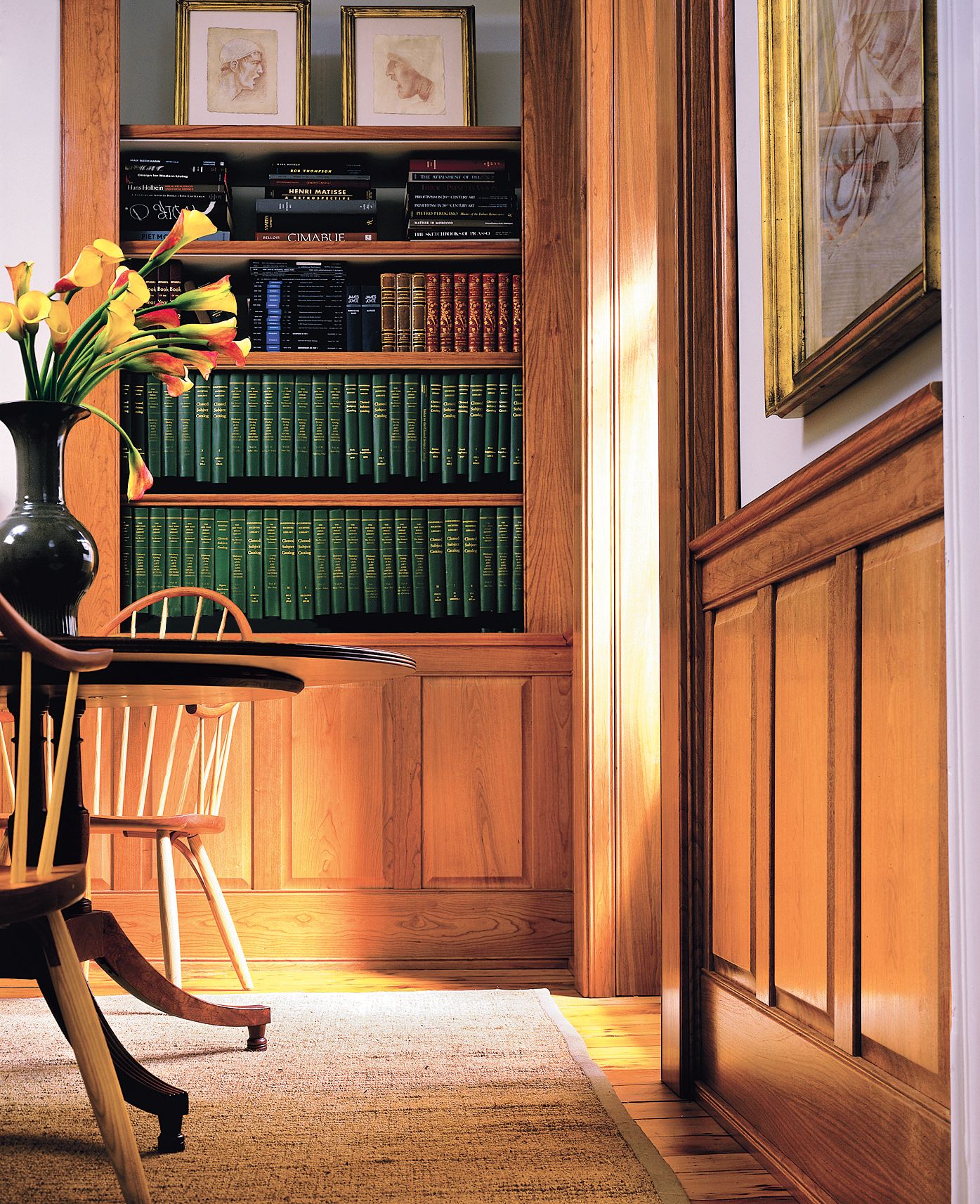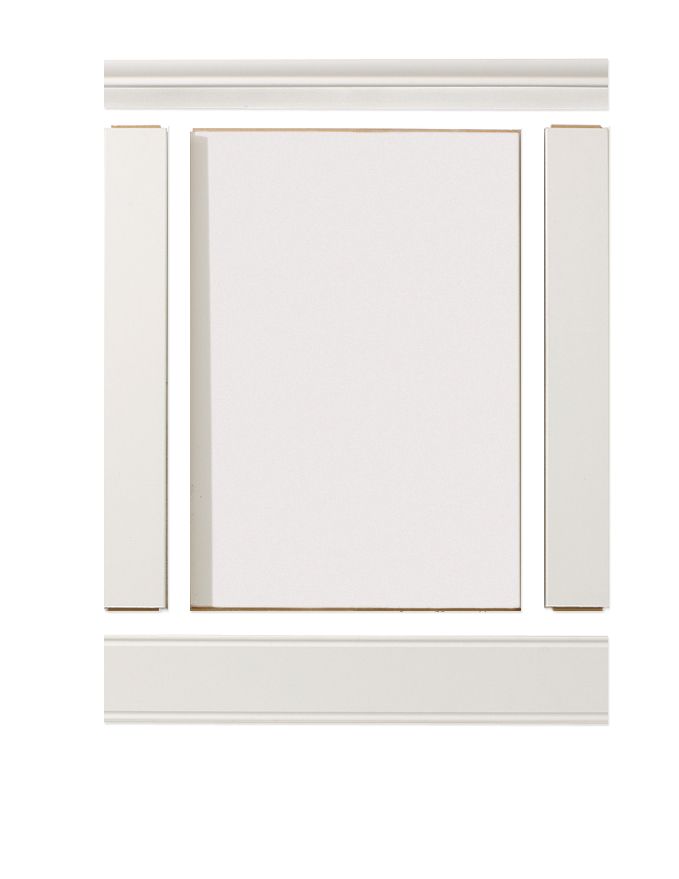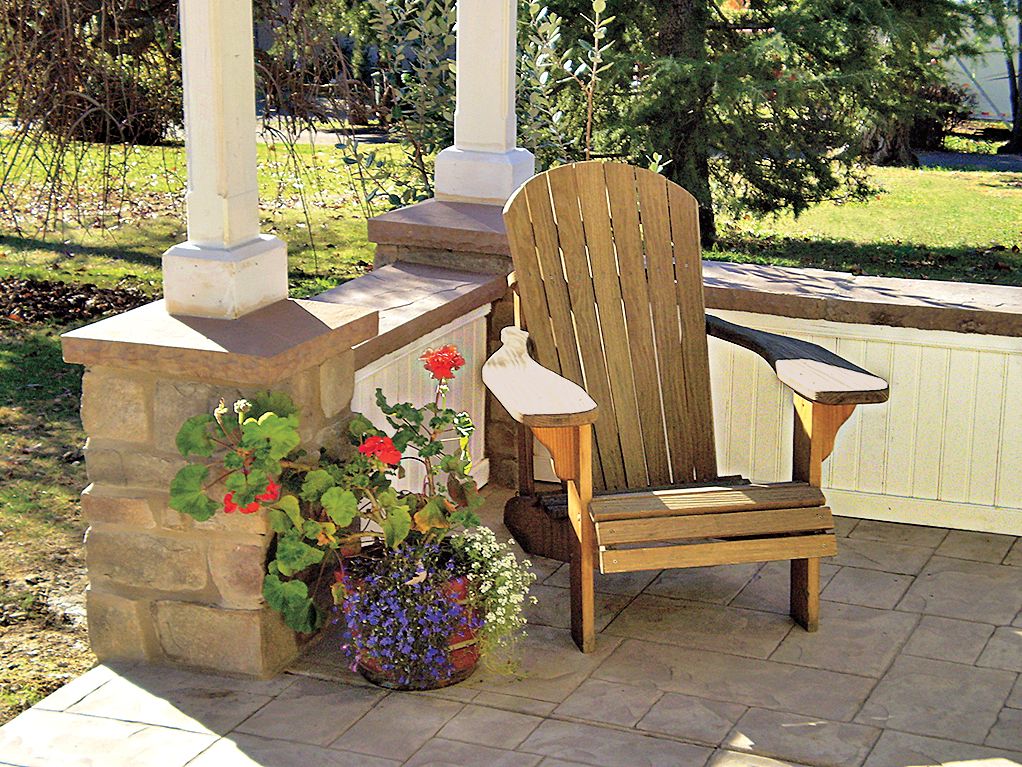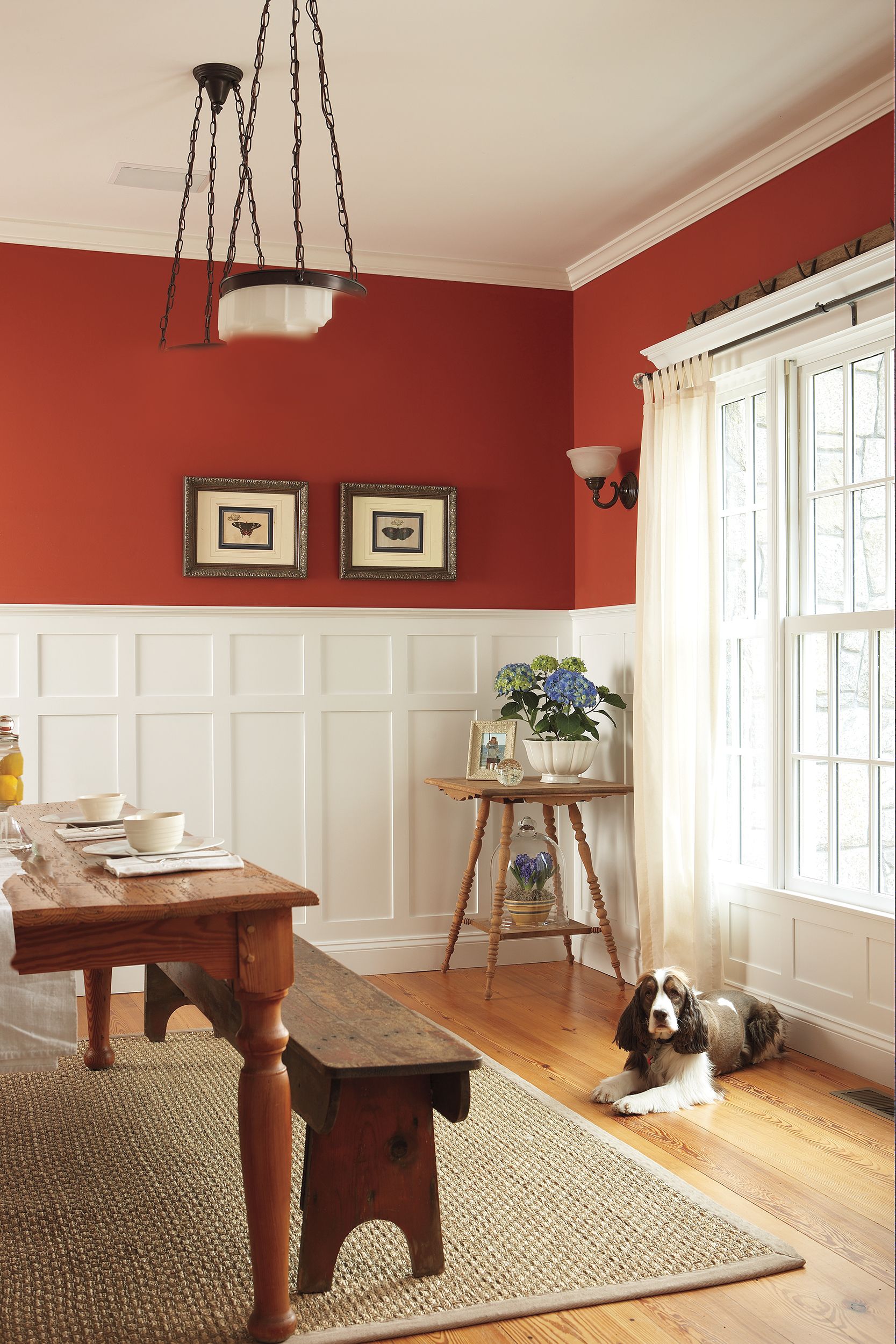Few details are better for giving rooms a clean, well-built look than wainscoting on the walls. Wainscoting is the combination of decorative boards or panels and moldings that extend partway up a wall’s face. Whether you’ve never really considered wainscoting or it’s a favorite detail of yours, we’ll cover everything you need to know.
What Is the Purpose of Wainscoting?
Wainscoting is an interior paneling option that guards our walls from dirt-caked gardening shoes in mudrooms, olive-oil fingerprints in kitchens, and scuffs in the close quarters along hallways and stairways. It’s available in various patterns and panels to suit almost any decor and is often used to stylishly safeguard walls that tend to take a beating.
What To Know About Wainscoting
Below, we answer your questions about wainscoting and offer some basic design options, plus provide a how-to plan for creating a pleasing layout.

How Do You Say “Wainscoting?”
Wayne’s coating? Wayne’s cotting? Wayne’s kitting? Merriam-Webster prefers the first pronunciation, but all are acceptable. It’s also fine to call it wainscot—the terms are interchangeable.
What’s Wainscoting Made Of?
Traditionally, wainscoting was made of solid wood, but now it’s also milled from plywood, plastic, and medium-density fiberboard (MDF).
How Much Does Wainscoting Cost?
Wainscoting starts at $2 per square foot for shiplap wainscoting that you assemble yourself and goes up to $40 per square foot for custom-crafted hardwood overlay panels.*
*Cost data in this article sourced from contractor estimates used by Angi.
Is Wainscoting a Good DIY Project?
Covering your walls with wainscoting made from stock boards—or “sticks”—and panels is easy to do yourself if you know your way around a chop saw. If you don’t, you can get wainscoting that arrives on your doorstep fully assembled and ready to install. If you are interested in this project, read our guide on how to install DIY wainscoting.
How Much Care Does Wainscoting Need?
If you top wainscoting with semigloss paint or clear polyurethane finish, you can wipe stray marks with a sponge and soapy water.
Where To Use Wainscoting

Wainscoting is particularly well-suited to rooms that endure a lot of wear and tear.
1. Entryways
In mudrooms, where boots, backpacks, and wet umbrellas can damage walls, beadboard is a good choice because there are fewer prominent edges to dent and ding. The walls in more formal foyers are often clad in paneled wainscoting.
2. Stairs and Hallways
The walls of these narrow passages benefit from wainscoting’s scuff and mark protection. The horizontal rails and the cap generally follow the pitch of the stair, while the stiles or beadboard remain vertical.
3. Eating Areas
In dining rooms, tall wainscot topped with a grooved plate rail can display fine china and serving pieces. For more casual kitchens, wainscoting capped at chair height with a prominent top rail safeguards walls from being marred when diners push back from the table.
4. Family Rooms and Dens
Adding wainscoting to areas where kids—and pets—congregate is a good idea. Rec rooms benefit too, with a cap rail that’s wide enough to perch a drink, ping-pong paddles, or pool-cue chalk.
5. Baths
Wainscoting made from warp-resistant wood, specially treated MDF, or solid surfacing helps protect the drywall or plaster underneath from water damage. It also has a warming effect in this room, where cold porcelain fixtures, ceramic floors, and tub enclosures can predominate.
6. Kids’ Rooms
Parents will appreciate the way wainscoting looks and how easily it cleans up after being used as a canvas for finger paints and crayons.
Types of Wainscoting Materials
Wainscoting’s appearance, how it holds up, and its cost depend on its material.

Solid Wood
Price level: Low- to high-end, depending on species
Wood is the original wainscoting material. Wood requires careful installation and finishing to prevent cracks and gaps caused by seasonal expansion and contraction. You can paint less expensive species, such as pine, or clear-coat pricier options, such as walnut and cherry, to highlight its color and grain.
MDF
Price level: Midrange
Medium-density fiberboard cuts like wood but doesn’t expand, contract, warp, split, or have knots. It comes either primed for paint or veneered. Specially treated moisture-resistant MDF can stand up to steam in a bathroom but otherwise, you should keep regular MDF away from moist areas as water causes it to swell and break down.
Plastic
Price level: Midrange
Made from either cellular PVC or the same solid surfacing material used for kitchen counters, plastic wainscoting looks like painted wood but won’t rot, making it ideal for baths, laundry rooms, and even a kitchen backsplash.
Plywood
Price level: Low-end
Plywood’s long, wide sheets make installation fast—just rip it down, glue it to the wall, and finish with cap and base moldings. Unlike those in other materials, the groove profiles tend to be shallow and rough.
Wainscoting Design Rules
Paneling for wainscotting comes in a variety of shapes and designs. Follow these guidelines for pleasing proportions.

What Is the Proper Height for Wainscoting?
Generally, the cap sits about one-third the way up the wall. So if the ceiling is 9 feet, go for 3-foot wainscoting. For taller wainscoting, such as one with a plate rail, cap it two-thirds of the way up the wall.
How Wide Should Wainscoting Panels Be?
Wainscoting panels should all be the same, so avoid cutting individual panels down at corners and doorways to get them to fit walls of varying lengths. Architects and kit makers use computer-aided design software to calculate panel widths that work for your specific room dimensions.
How Do You Add Wainscoting Under Windows?
To add beadboard under windows, simply cut it to size. For paneled wainscoting, order a center panel that’s the same width as your cased window. Its height will vary depending on the distance between your window’s projecting bottom stool and the floor or baseboard top.
Should You Add Baseboard To Wainscoting?
Baseboard topped with a profiled cap visually anchors wainscoting in a room and adds a little extra kick protection. Cover the joint where wainscoting meets the floor with shoe molding.
Budget-Friendly Wainscoting Alternatives
If you want to get the look of wainscoting without the pricey panels, you have a few good alternatives.
1. Painted on Planks
Roll vertical stripes in alternating hues over the lower third of your wall for a cheery two-tone plank effect. A horizontal painted band mimics a cap rail.
2. Wall Frames
Install a chair rail and glue and nail frames made from decorative panel moldings beneath it. Paint the chair rail and everything below the same color for the look of raised-panel wainscoting.
3. Faux Flat Panel
Glue and nail rails, stiles, and cap molding directly to smooth drywall or plaster to mimic flat panel wainscoting. Paint the boards the same color as the wall, or finish the wood in an accent color to match the rest of the trim in the room.
4. Stain-Grade Wall Veneer
Affix hardwood plywood directly to the wall. Then nail on your stiles and rails, and top the plywood with cap molding. For the look of a solid-wood assembly, cut the plywood so that its grain runs vertically on the wall.
Our Conclusion
While there are many ways to add architectural details to your home, wainscoting can be both visually pleasing and functional. Depending on your choices, wainscoting can change the vibe of a room, making it feel more formal, cozy, or even historic. Now that you have a better idea of what wainscoting is, why you might use it, the materials you can choose from, and ways to save on costs, you can start brainstorming ways to add wainscoting to your home.

